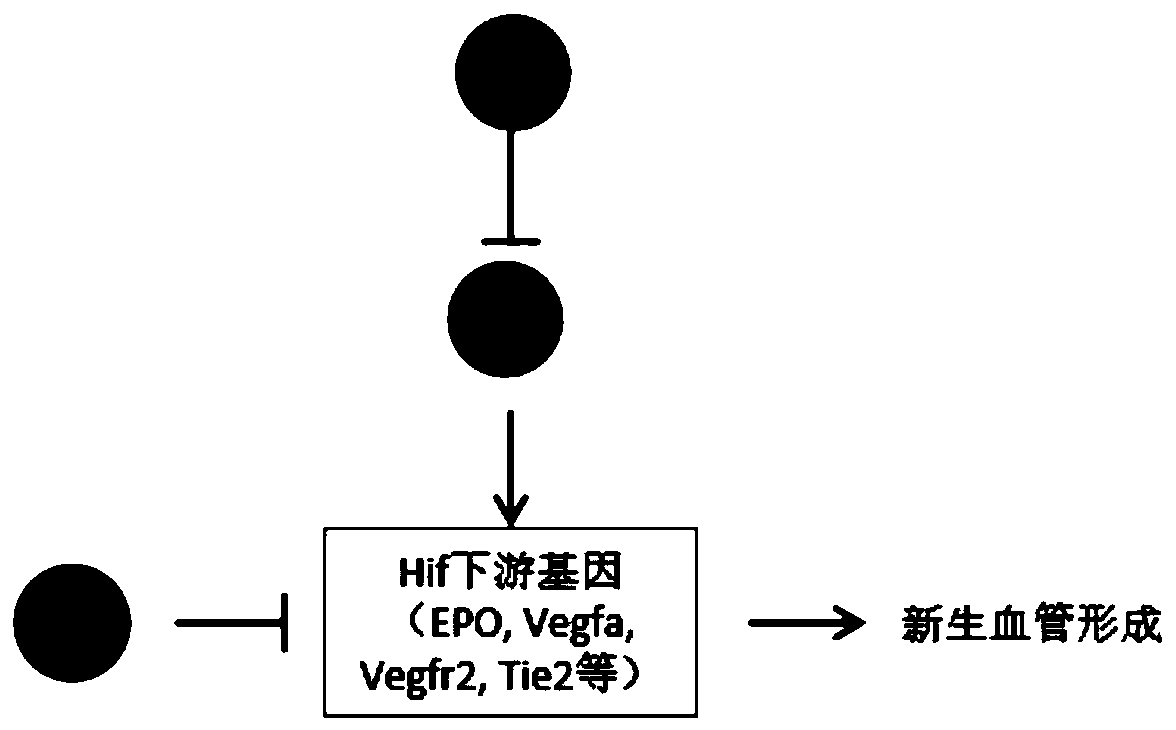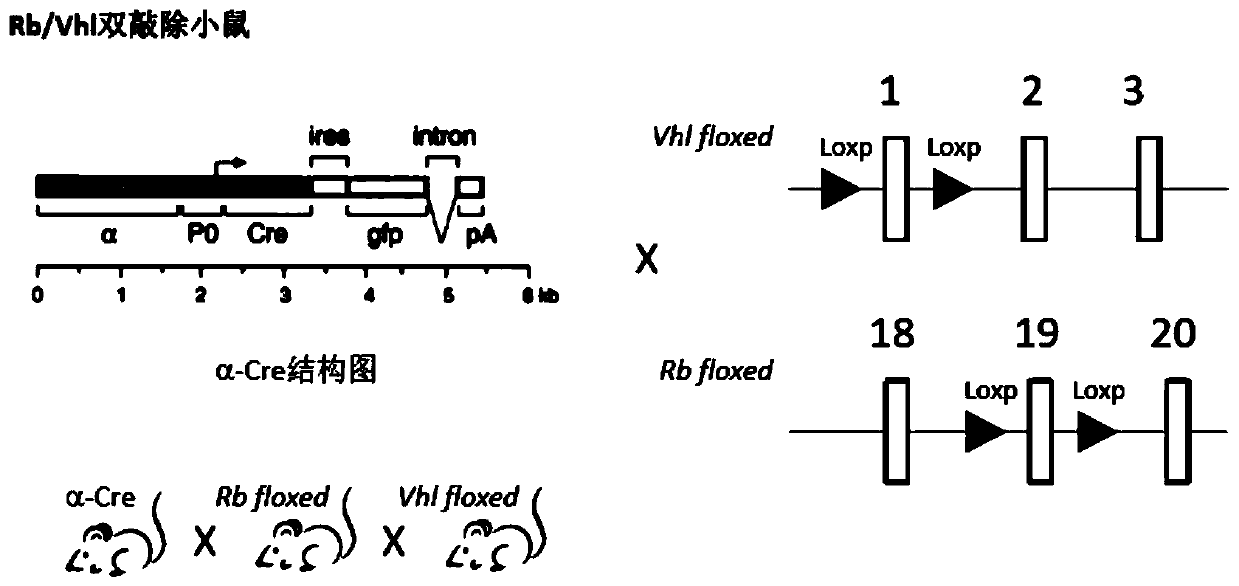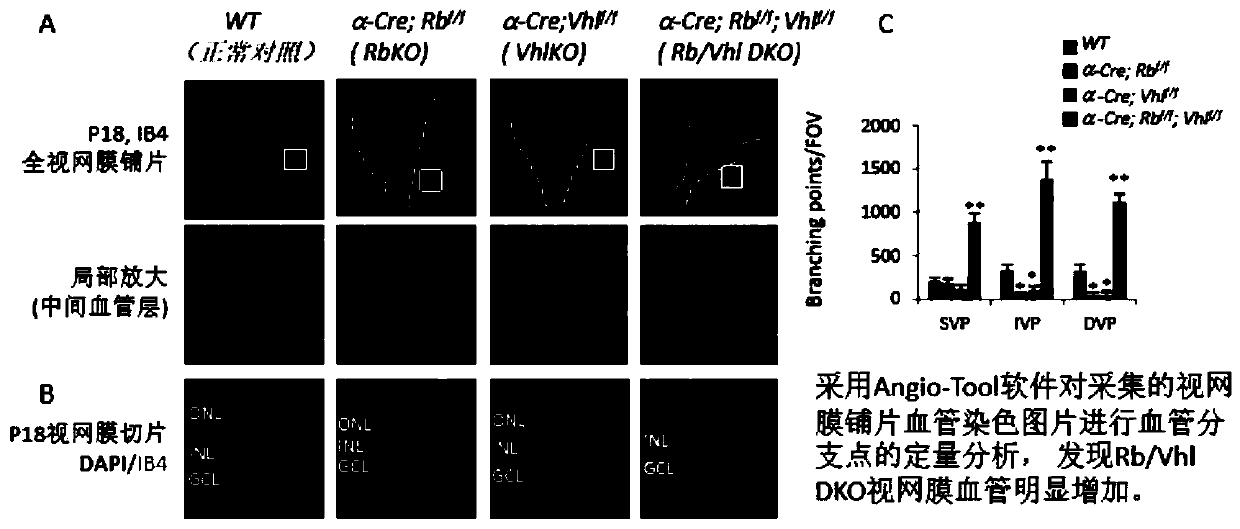Construction method of retinal angiomatous proliferation (RAP) and/or retinal capillary hemangioma (RCH) model
A technology of retinal blood vessels and capillaries, applied in the field of retinal hemangioma-like hyperplasia and/or retinal capillary hemangioma model construction, can solve the problems of retinal neovascularization without hemangioma, retinal vascular development delay, etc.
- Summary
- Abstract
- Description
- Claims
- Application Information
AI Technical Summary
Problems solved by technology
Method used
Image
Examples
Embodiment 1
[0029] Embodiment 1, the construction of Rb / Vhl double knockout model of the present invention
[0030] 1) Crossbreeding α-Cre mice with Vhl floxed mice, the resulting Vhl knockout mice are used as the F1 generation;
[0031] 2) The F1 generation of step 1) is crossed with the Rb floxed mouse, and the F2 generation obtained is the mouse model.
Embodiment 2
[0032] Embodiment 2, the construction of Rb / P107 / Vhl TKO model of the present invention
[0033] a) Crossbreeding α-Cre mice with Vhl floxed mice, and the Vhl knockout mice obtained as the F1 generation;
[0034] b) crossing the F1 generation of step a) with the Rb floxed mouse to obtain the F2 generation;
[0035] c) crossing the F2 generation in step b) with p107- / - mice, and the obtained F3 generation is the mouse model.
[0036] The beneficial effects of the present invention are illustrated below through test examples.
PUM
 Login to View More
Login to View More Abstract
Description
Claims
Application Information
 Login to View More
Login to View More - R&D
- Intellectual Property
- Life Sciences
- Materials
- Tech Scout
- Unparalleled Data Quality
- Higher Quality Content
- 60% Fewer Hallucinations
Browse by: Latest US Patents, China's latest patents, Technical Efficacy Thesaurus, Application Domain, Technology Topic, Popular Technical Reports.
© 2025 PatSnap. All rights reserved.Legal|Privacy policy|Modern Slavery Act Transparency Statement|Sitemap|About US| Contact US: help@patsnap.com



